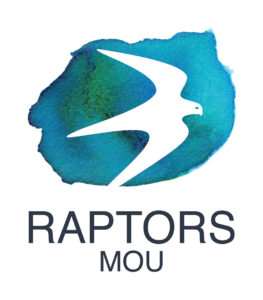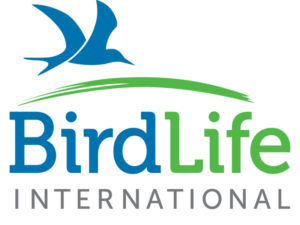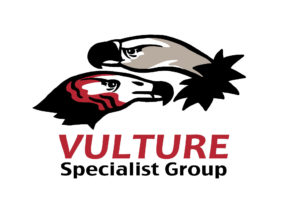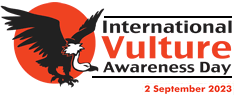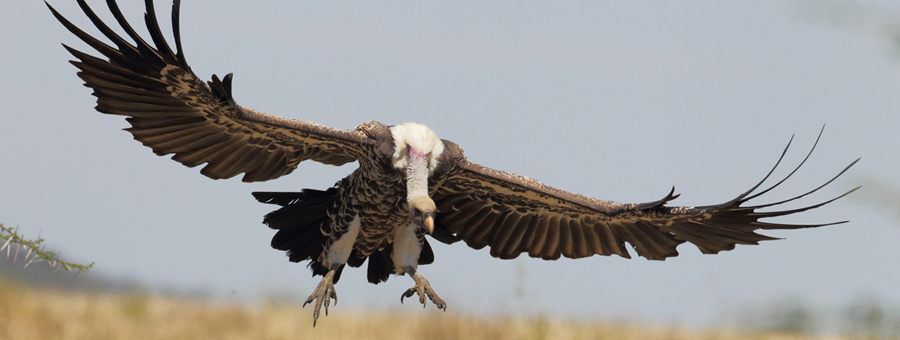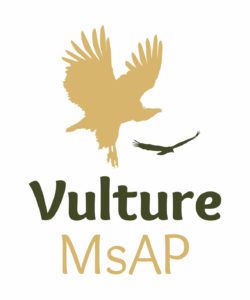 International Vulture Awareness Day and the CMS Vulture Multi-species Action Plan
International Vulture Awareness Day and the CMS Vulture Multi-species Action Plan
The first Saturday of September every year is International Vulture Awareness Day (IVAD). Started in 2006 by the Hawk Conservancy Trust and the Endangered Wildlife Trust’s Birds of Prey Programme, plus a range of partners and associates, IVAD has become a global event supported by the IUCN SSC Vulture Specialist Group; in 2016, 164 organisations from 47 countries participated. IVAD aims to create awareness about vultures as a whole, garner support among the public about the plight of vultures globally and highlight the work done by conservationists to protect these birds and their habitats.
Vultures are a characteristic, distinctive and spectacular component of the biodiversity of the environments they inhabit. They also provide critically important ecosystem services by cleaning up carcasses and other organic waste in the environment; they are nature’s garbage collectors and this translates into significant economic benefits. Studies have shown that in areas where there are no vultures, carcasses take up to three or four times longer to decompose. This has huge implications for the spread of diseases in both wild and domestic animals, as well as elevating pathogenic risks to humans.
The IUCN Red List status of African-Eurasian vultures has seen drastic changes for the worse in recent years and at the end of October 2015 many species were re-listed as Critically Endangered. This is the highest category of threat, which indicates a very high risk of extinction in the wild. Unless effective conservation action is implemented or expanded across the range of these birds, there is a high risk that several of these species will indeed become extinct in the wild in the near future.
Recent studies of the movement of vultures using satellite telemetry has shown that vultures travel across huge areas. Accordingly, conservation actions can only be effective if implemented at the flyway level, which requires a broad approach and the engagement of all countries in the range states for vultures. This realisation, along with the the seriousness of both the Asian and African Vulture Crises led to swift international agreement on the urgent need to develop an action plan to conserve African-Eurasian vultures under the Convention on the Conservation of Migratory Species of Wild Animals (CMS).
The Multi-species Action Plan to Conserve African-Eurasian Vultures (Vulture MsAP) provides a comprehensive conservation action plan covering the geographic ranges of all 15 migratory Old World vultures aimed at achieving the recovery of these populations to acceptable levels by 2029. The species that are the focus of this plan are:
- Hooded Vulture Necrosyrtes monachus (Africa) – Critically Endangered
- Indian Vulture Gyps indicus (Asia) – Critically Endangered
- Red-headed Vulture Sarcogyps calvus (Asia) – Critically Endangered
- Rüppell’s Vulture Gyps rueppelli (Africa, (Europe*)) – Critically Endangered
- Slender-billed Vulture Gyps tenuirostris (Asia) – Critically Endangered
- White-backed Vulture Gyps africanus (Africa, (Europe*)) – Critically Endangered
- White-headed Vulture Trigonoceps occipitalis (Africa) – Critically Endangered
- White-rumped Vulture Gyps bengalensis (Asia) – Critically Endangered
- Cape Vulture Gyps coprotheres (Africa) – Endangered
- Egyptian Vulture Neophron percnopterus (Europe, Asia, Africa) – Endangered
- Lappet-faced Vulture Torgos tracheliotos (Africa, Asia) – Endangered
- Bearded Vulture Gypaetus barbatus (Europe, Asia, Africa) – Near Threatened
- Cinereous Vulture Aegypius monachus (Europe, Asia, (Africa*)) – Near Threatened
- Himalayan Griffon Gyps himalayensis (Asia) – Near Threatened
- Griffon Vulture Gyps fulvus (Europe, Asia, Africa) – Least Concern
*Cinereous Vultures occur irregularly and in very small numbers in Africa; Rüppell’s and White-backed Vultures similarly in Europe.
The Vulture MsAP is the result of extensive consultation with stakeholders, conservation and species experts, the goal is to rapidly halt current population declines in all the 15 African-Eurasian vulture species. It covers most of the combined land masses of Africa and Eurasia. A total of 128 Range States host populations of one or more species of African-Eurasian vultures and are therefore included within the geographic range of the Vulture MsAP. Range States are encouraged to use the MsAP as a guide for drafting national vulture conservation action plans suited to the situation in their respective countries. This Vulture MsAP has the following aims:
- To reverse recent population trends to bring the conservation status of each species back to a favourable level and;
- To provide conservation management guidelines applicable to all Range States covered by the Vulture MsAP.
Following approval by the CMS Scientific Council in July 2017, the Vulture MsAP was adopted at the 12th Conference of Parties (COP12) of the Convention which was held in Manila in the Philippines in October 2017. The complete MsAP with annexes can be accessed from the CMS website. There is also a summary of the MsAP in English, French and Spanish available for download.
Some outstanding work has been and continues to be done to conserve vultures. However, the threats are both severe and challenging to address, and a change in conservation action is required, led by Governments and supported by all stakeholders, including many who have so far not recognised the importance of vultures. Lessons learned and good practice can be applied more widely but new and creative solutions need to be found to address the clear and present danger that threatens to drive this spectacular group of birds to extinction. The many stakeholders concerned with vulture conservation must work together, and not rest until all vulture species are safe from this threat, ensuring that the millions of people who also benefit from them in many ways can continue to do so. Participants and supporters of International Vulture Awareness Day are a key stakeholder group in achieving this goal. Participants can also garner support for the drafting and implementation of national action plans for the conservation of vultures within the guidelines provided by the MsAP.
